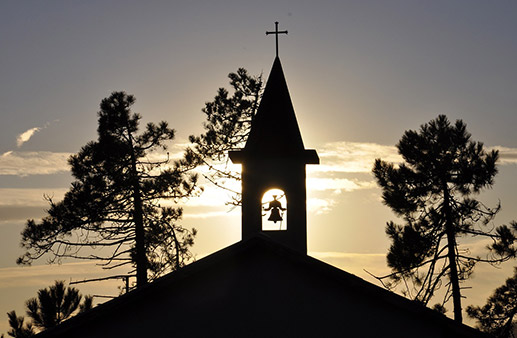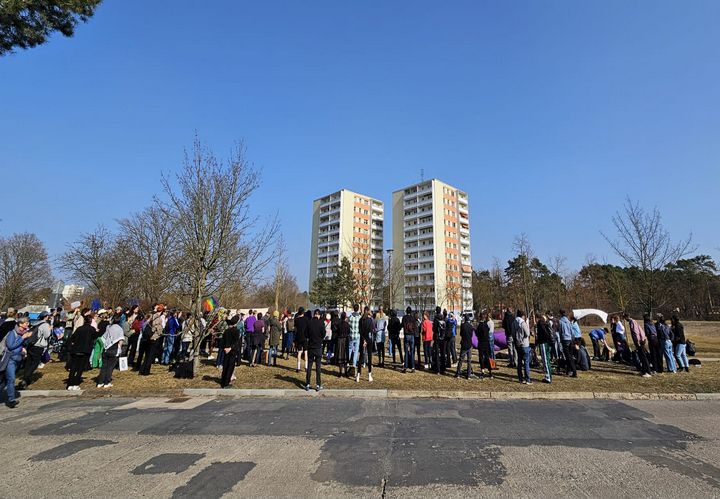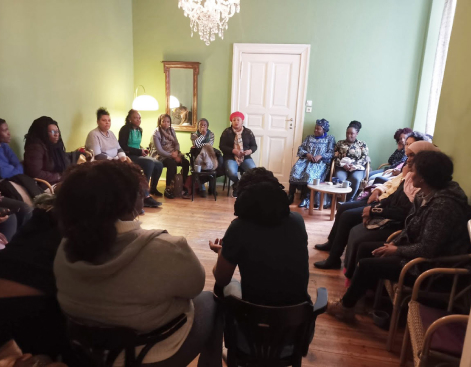Church Asylum turns 40 years old & Visit to Polish/Belarus border
Women in Exile and Friends are part of the International Sanctuary Declaration network. So this summer we took part in celebrating 40 years asylum in the German church.
The movement started in 1993, one year after the US sanctuary movement. In the two day conference, held on the 30.-31. August, the history of the international sanctuary movement was introduced, panel discussions and workshops were held, to find out how to improve the work of sanctuary and intervene in todays racist status quo, asylum seekers have to face.
Church Asylum
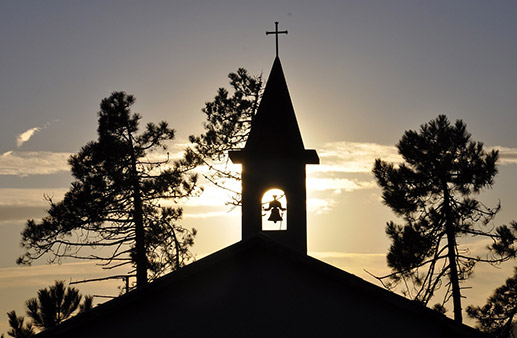
40 years ago the church in Berlin opened their doors for a Palestinian family in threat of deportation. It ended successful and many more followed. The churches have no right for churchasylums, it is only (or mostly) tolerated by the state and a result of the struggle for freedom of movement and protection for refugees – a religious commandment that is not negotiable. There are always attempts to criminalize the refugees and the leadership of the congregations or monasteries involved. In very rare cases, church asylum is also broken by the police: In July, a Kurdish family was taken out of church asylum in North Rhine-Westphalia and placed in deportation custody. After protests, the deportation was stopped.
In order to protect people from deportation, the church reports to BAMF that the persons are in their care. This can buy time to explore other chances for individual stay. In August 2023 655 persons are in churchasylum in Germany, 136 of them are children.
The conference had national and international delegates, who are involved in working with refugees especially in border crossing areas; where refugees risk their lives everyday trying to find safety. These included the borders of Poland/Belarus, Greek/Turkey, USA/Mexico, USA/Canada, Guatemala/Mexico.
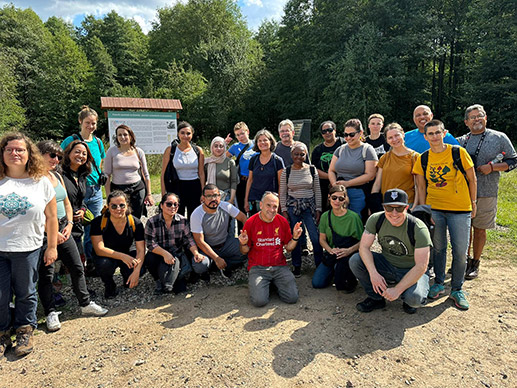
Visit of EU Border
After joining the conference by facilitating a workshop and being on a panel, we took part in an observation delegation to the Poland/Belarus border, from the 01.-07. September. This trip brought us in touch with different players supporting the people on the move, trying to cross the Poland/Belarus border. The reality of the permanent violent and sometimes deadly push-backs and the militarisation of this border was shocking.
We learnt of the dangers the people face trying to jump the high barbed walls, moving through densely, swampy and beautiful old forest. We saw how nature right and human rights are connected and both being trampled on by the militarisation: A 187 km long 5,5 m high fence cuts the forest, the wildlife and people apart. The border (not the people) is secured by every 50 m two soldiers with machineguns. Violent pushbacks and imprisonment of those who manage to cross the border are happening every day. The solidary people from the villages, activists and organisations trying to intervene to offer humanitarian aid to them, are criminalised, labelled as smugglers and threatened with imprisonment.

Thus, they operate in fear and we could feel this fear ourselves because of the many police check-points and the presence of military vehicles moving all over in the borderlands. This does not stop the refugees from coming and also not stops the activists and humanitarian groups doing interventions in these hard conditions. But it increases the dangers they have to face. Refugees are pawns in a wider conflict of the EU politics. They are trapped because Polish do pushbacks to Belarus and Belarus tries to force them back towards Poland. Delegating the dirty job to the countries on its external borders does not absolve German and the rest of Europe of responsibility for this tragedy. The violence at the external EU borders legitimises and creates more and more right-wing organisation and violence in the EU – it needs to be stopped.
